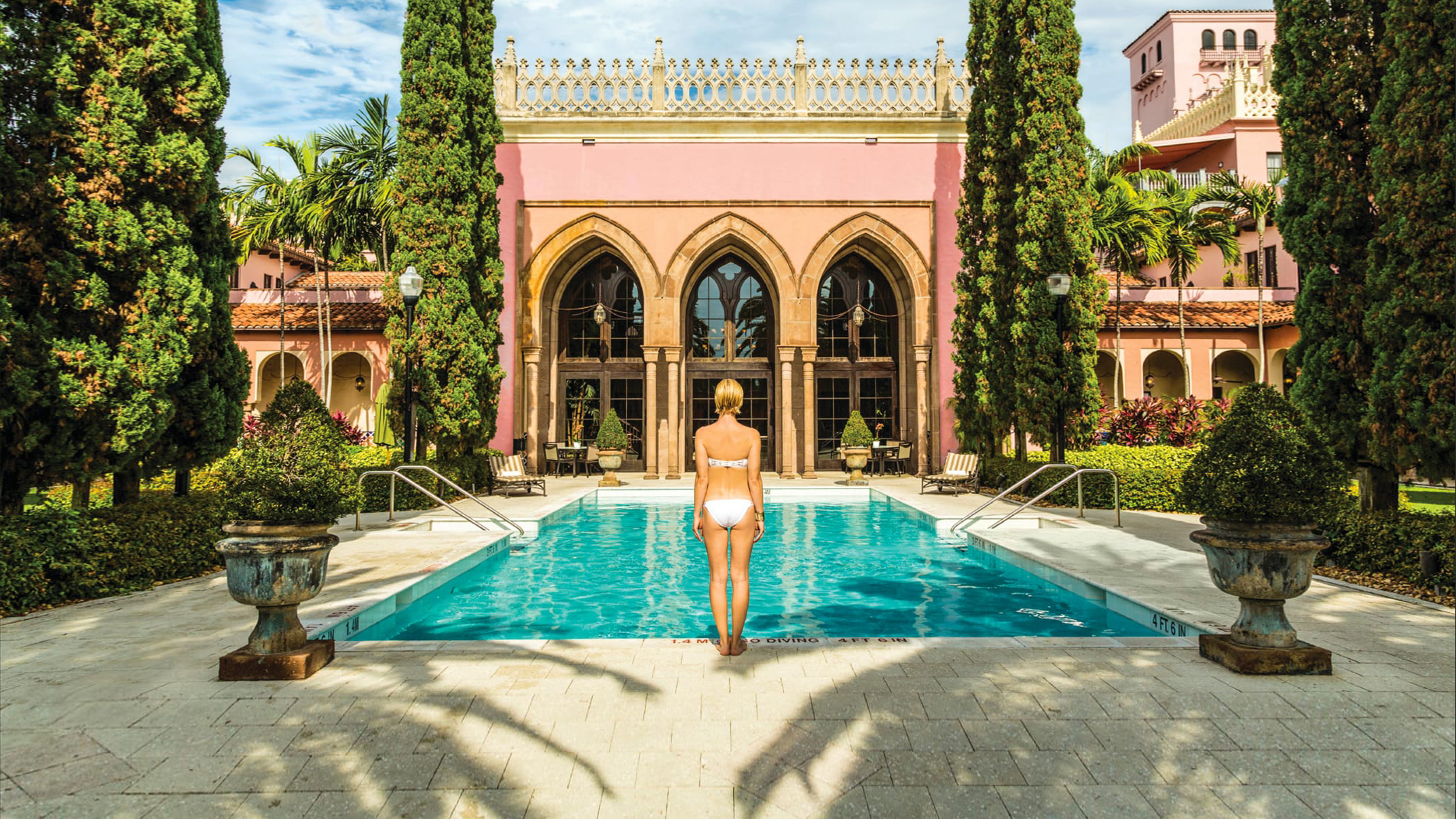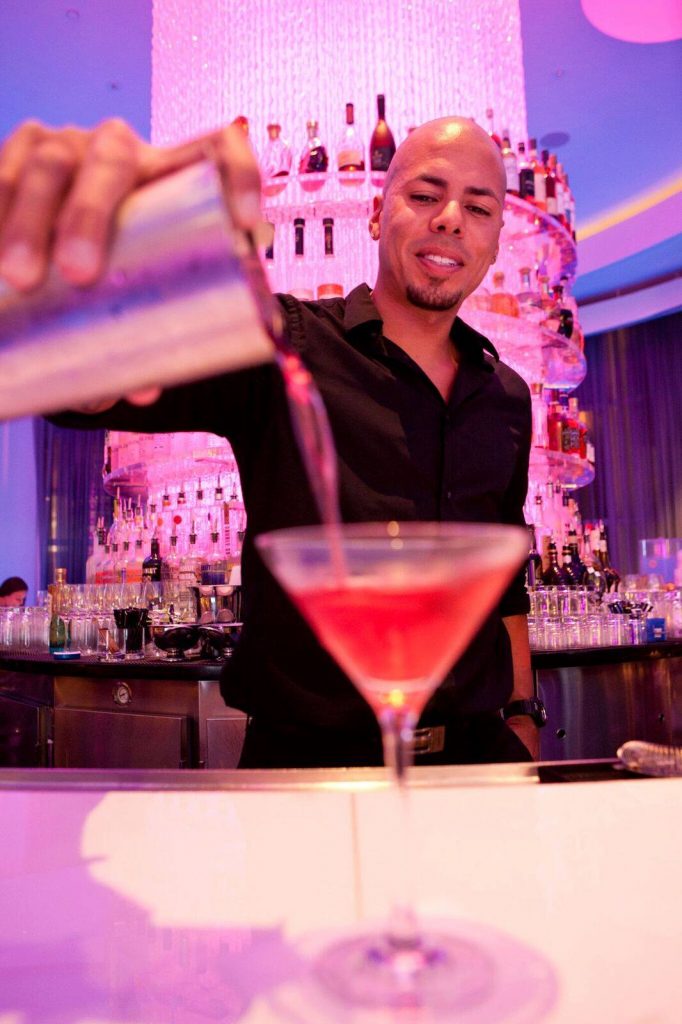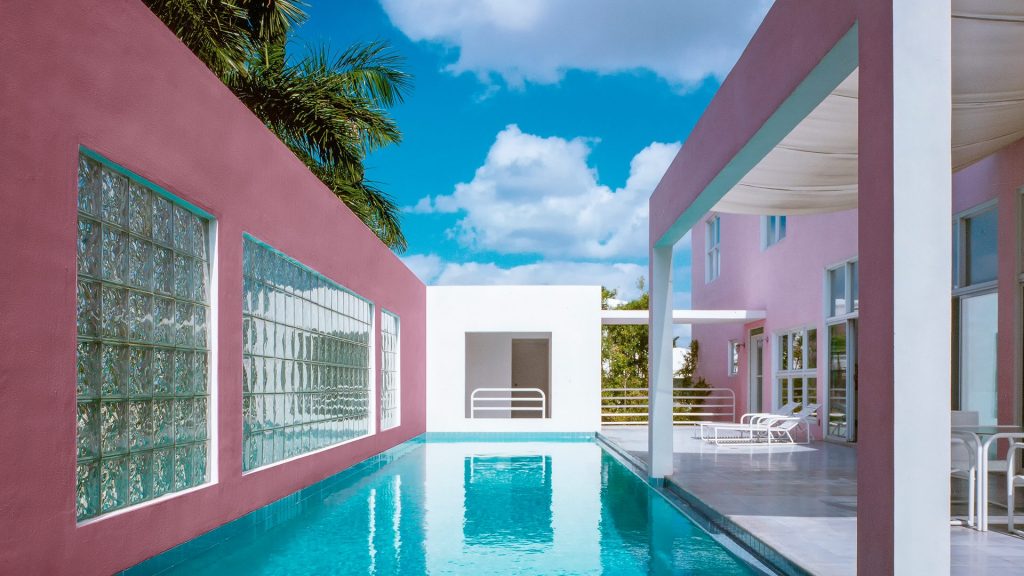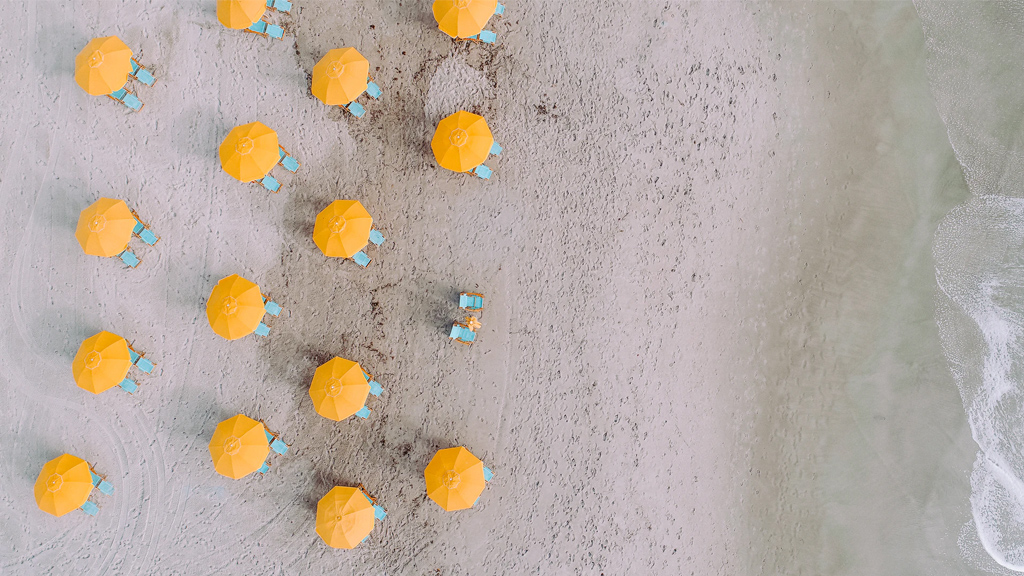
Basking in the Uniquely Floridian Power of Pink

Opened in 1926 as the Cloister Inn, the tony Boca Raton Club famously wears a coat of “Boca Pink” paint. (Waldorf Astoria)
Before the people, there were the flamingos, likely blown in by a tropical storm from the Caribbean. They joined their homely roseate spoonbill cousins and snacked on pink shrimp. There was pink in the blooms of bromeliads, in the millions of sunrises and sunsets. The rest of the peninsula was as green as a palmetto smoothie.
Then a group of pioneers looked at beautiful but inaccessible beaches bordered by inhospitable wetlands and saw paradise. And that paradise was pink.
So, the people came, and they built pink bungalows on the beaches, and pink cinder-block ranches in the suburbs. They drank pink cocktails under pink neon dressed in pink party dresses, pink pants, and polos. They stayed at giant pink resorts and low-slung pink motels, and ate at trendy restaurants in shades of fuchsia, rose, coral, cotton candy. And to prove they were Floridian, they hammered talismans in their green, green lawns: graven images of a flamingo, cast in pink plastic.

Pouring a potent shade of pink in the Bleau Bar at the famed Fontainebleau Miami Beach. (Zach Stovall)
On Florida’s west coast, overlooking St. Pete Beach, stands The Don CeSar. It’s a 277-room hotel known as the “Pink Palace.” Built in 1928, it’s been pink for as long as it has hosted guests. “Pink has always been associated with the tropics and lends itself well to sunny days and blue waters,” says Stephen Sowards, general manager of the property. “When combined with the Mediterranean-style architecture, the Pink Palace definitely makes you feel like you are in the islands.”
In this first phase of Florida tourism, pink was something of an outlier. The community of Coral Gables had been built a few years before, and some other grand buildings, notably the Boca Raton Club (now a Waldorf Astoria resort) had been clad in pink. The pastels of the Caribbean shacks and statehouses trickled upwards through the state. But the Depression slowed development—Miami’s South Beach, known now as the “Pastel Paradise,” was built during this time, and its “Depression Deco” was an unornamented white—and then came the war. Many of the seaside hotels were commandeered as army barracks, and even the venerable Don CeSar became a military hospital. Its pink paint peeled away.
But at the end of the World War II, a new prosperity—and good timing—made Florida pink again, this time for good.
“Florida Pink” is designated #1320 by Benjamin Moore Paints. “It’s a bright cerise color with an orange undertone, giving it a feeling of a coral,” says Nivara Xaykao, a color and design expert with the paint company. “It encapsulates a lot of different pinks you see in Florida.”
Florida Pink encapsulates a bit more than the natural world, according to Xaykao. “It’s an iconic color from a very plastic consumer culture that emerged in the fifties,” she says. In an era of postwar prosperity, pink was the color of first ladies’ ball gowns and mid-mod bathrooms. A “bashful” pink ran through fashion for men and women, and consumer goods were encased in glossy versions. Elvis’s Pink Cadillac was a 1955 Fleetwood. Don Featherstone invented the pink plastic flamingo in in 1957. In 1959, author Carol Ryrie Brink published the children’s classic The Pink Motel, set in Florida.

Finished in 1979, the Miami-based architecture firm Arquitectonica’s iconic Pink House features five shades of pink — to “heighten the illusionistic perspective and define the series of planes.” (Arquitectonica)
And the pink kept piling up, even as the national trends faded into the avocado and harvest gold of the sixties and seventies. In 1976, Miami’s South Beach adopted a color palette heavy on the pinks, finally livening up the white. The Don CeSar was rescued from demolition by local citizens and returned to its original “rouge” with one thousand gallons of pink paint, per coat. In 1984, the TV series Miami Vice made the pigmentation of Florida permanent, and infected the rest of the country with pastels for a good bit of the eighties.
One year before that, Christo and Jeanne-Claude had installed “Surrounded Islands” in Biscayne Bay. The seven-mile-long artwork surrounded 79 islands with 6.5 million square feet of floating pink polypropylene fabric. For two weeks, there was no place on earth pinker than south Florida.
One of the volunteers who helped pull off that installation was Carlos Betancourt, now one of Florida’s preeminent artists. One of his recent works, “Let Them Feel Pink,” is a 26-foot-long table holding objects the artist collected on a road trip from Jacksonville to Miami. The whole 26 feet were then doused with a bright pink resin. Betancourt sees pink as “a color of great reflective quality, associated with the particular sunset colors of Florida.” It’s a beautiful coat of deep, deep pink, covering all that is broken and cheap and gaudy, but also all that is useful and celebratory and extravagant. It’s the reality of paradise, painted pink.
And yes, there’s at least one lawn flamingo under all that resin.
[separator type=”thin”]
This story appears in the 2019 edition of Properties for Living magazine, The Corcoran Group’s annual celebration of exceptional homes in New York City, the Hamptons, and South Florida.
To receive your free copy, stop by a Corcoran office.
[embed_cta url=”https://www.corcoran.com/florida”]Find your own pink palace.[/embed_cta]




